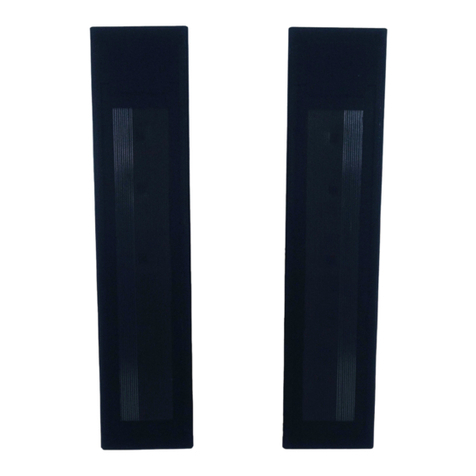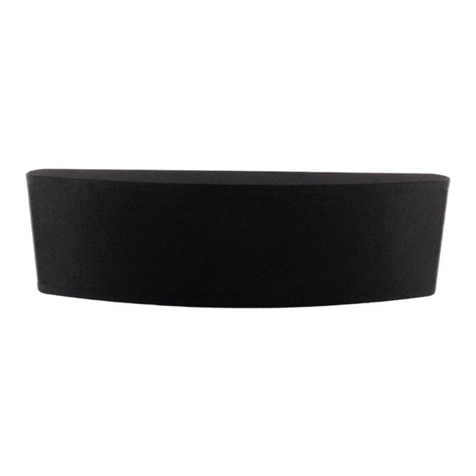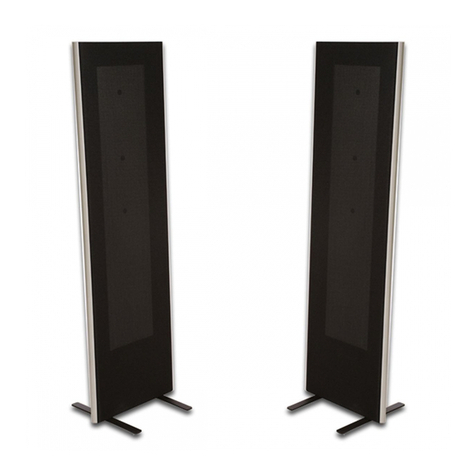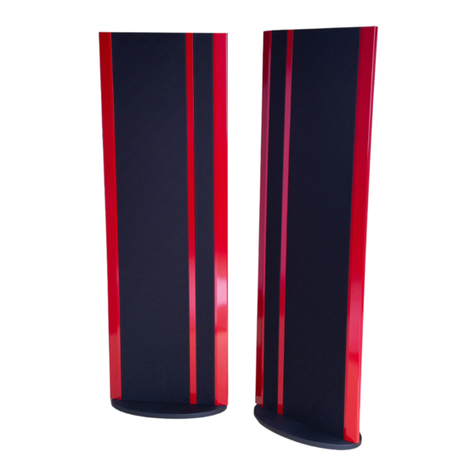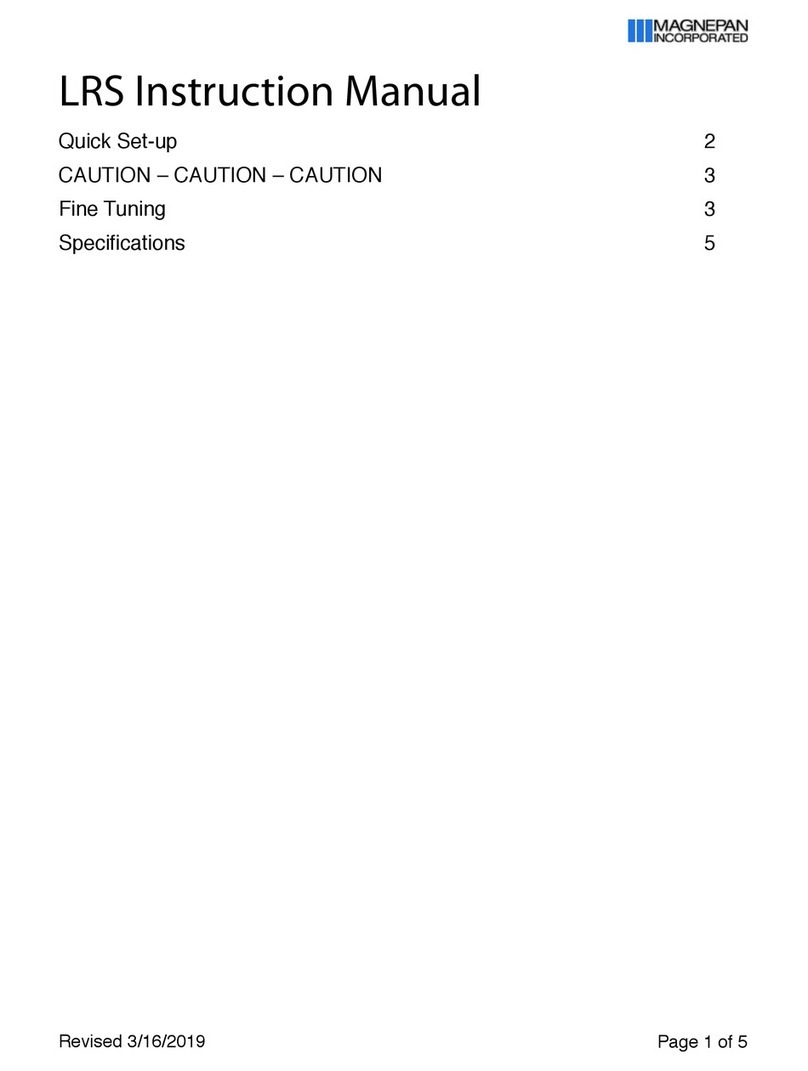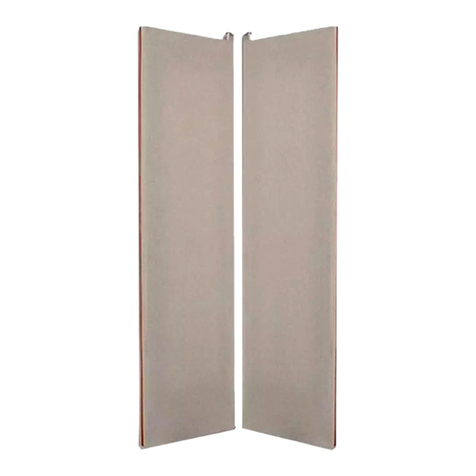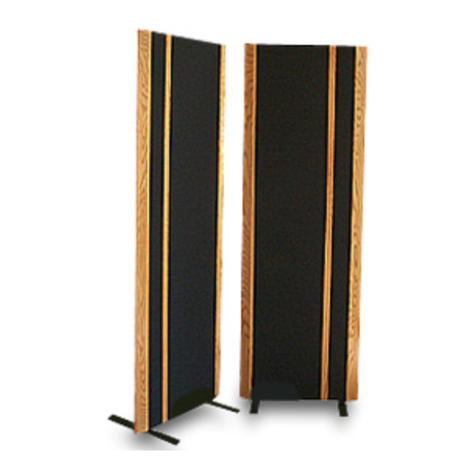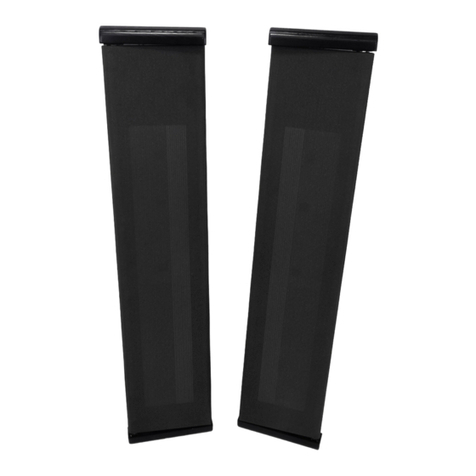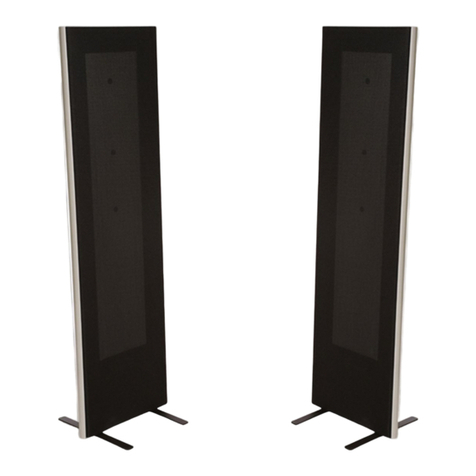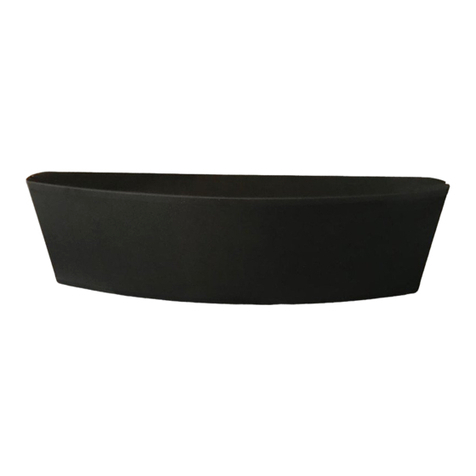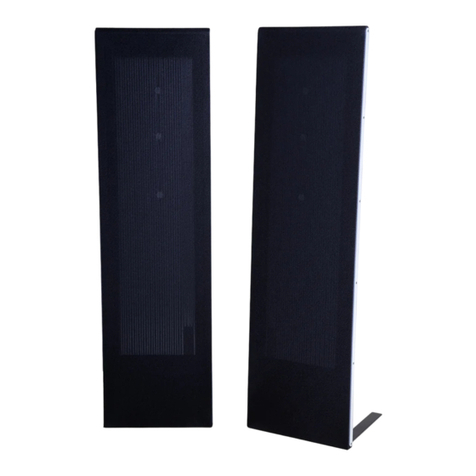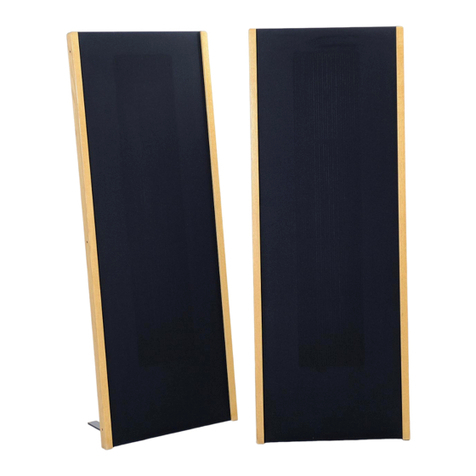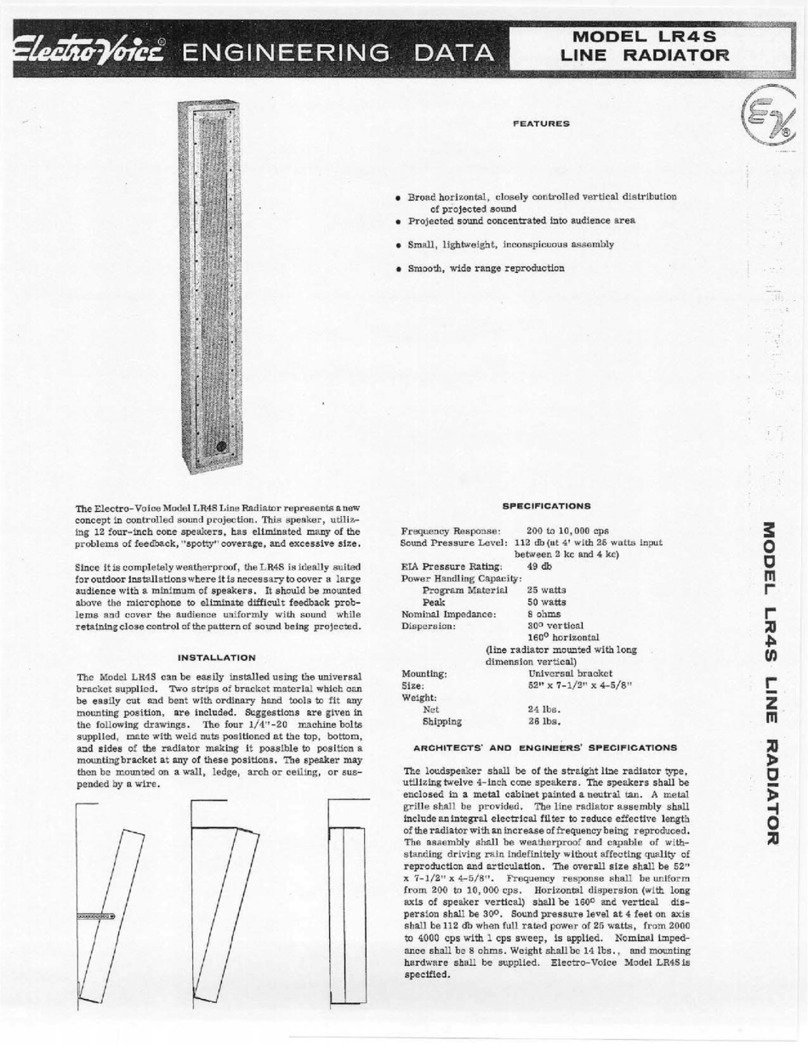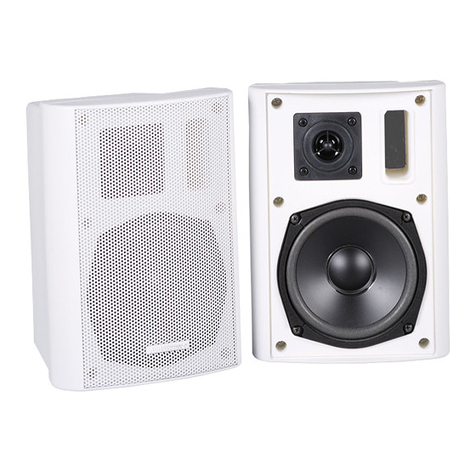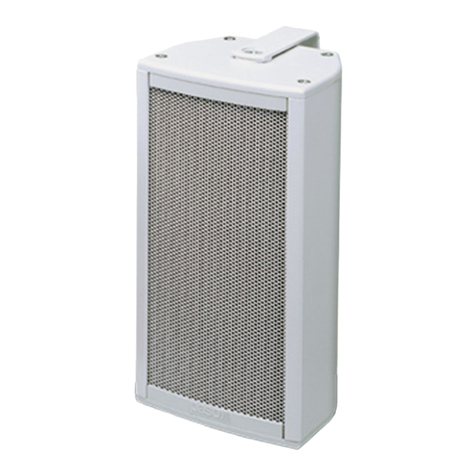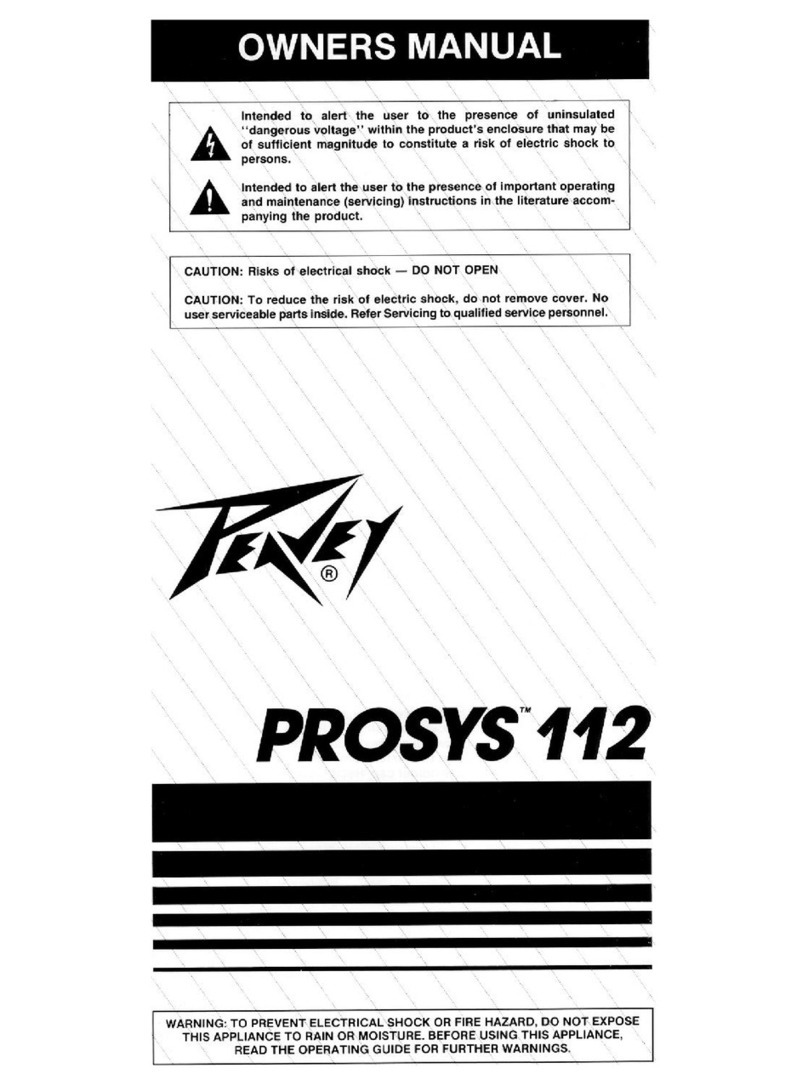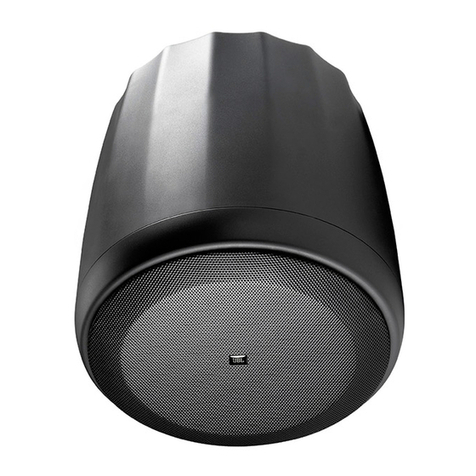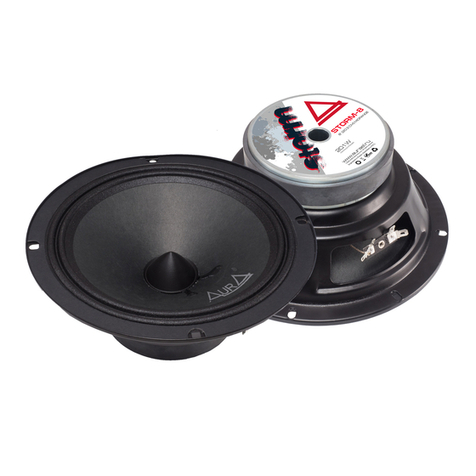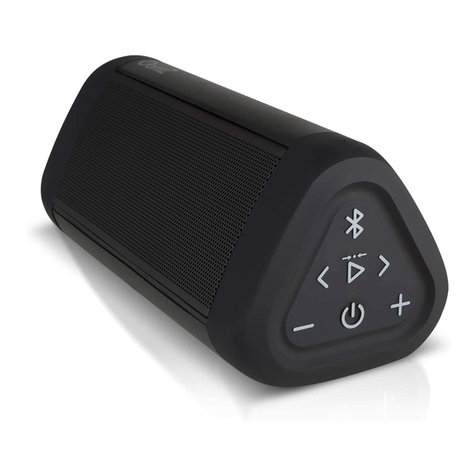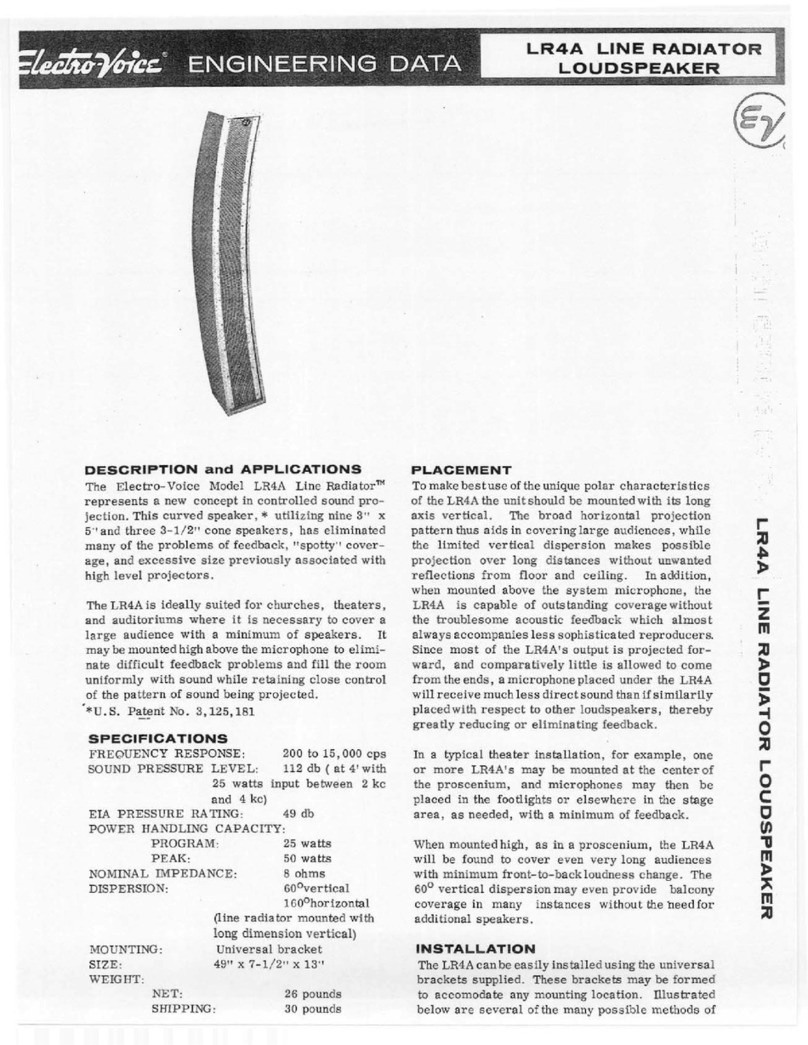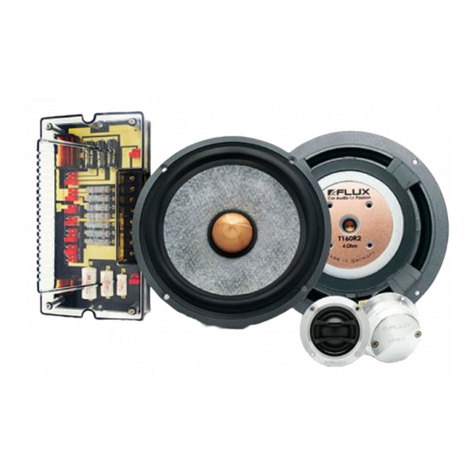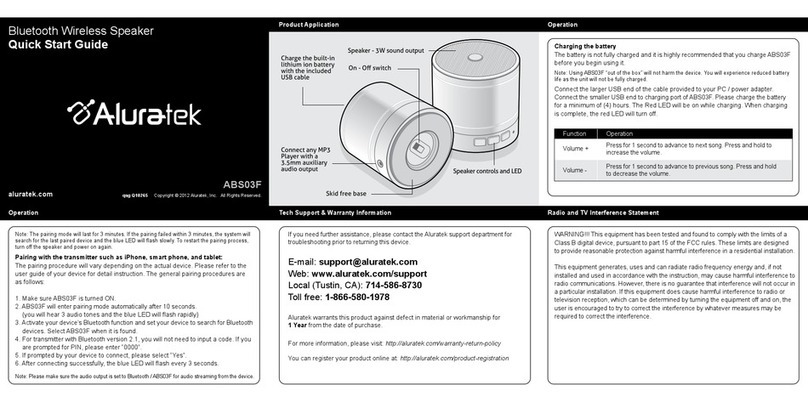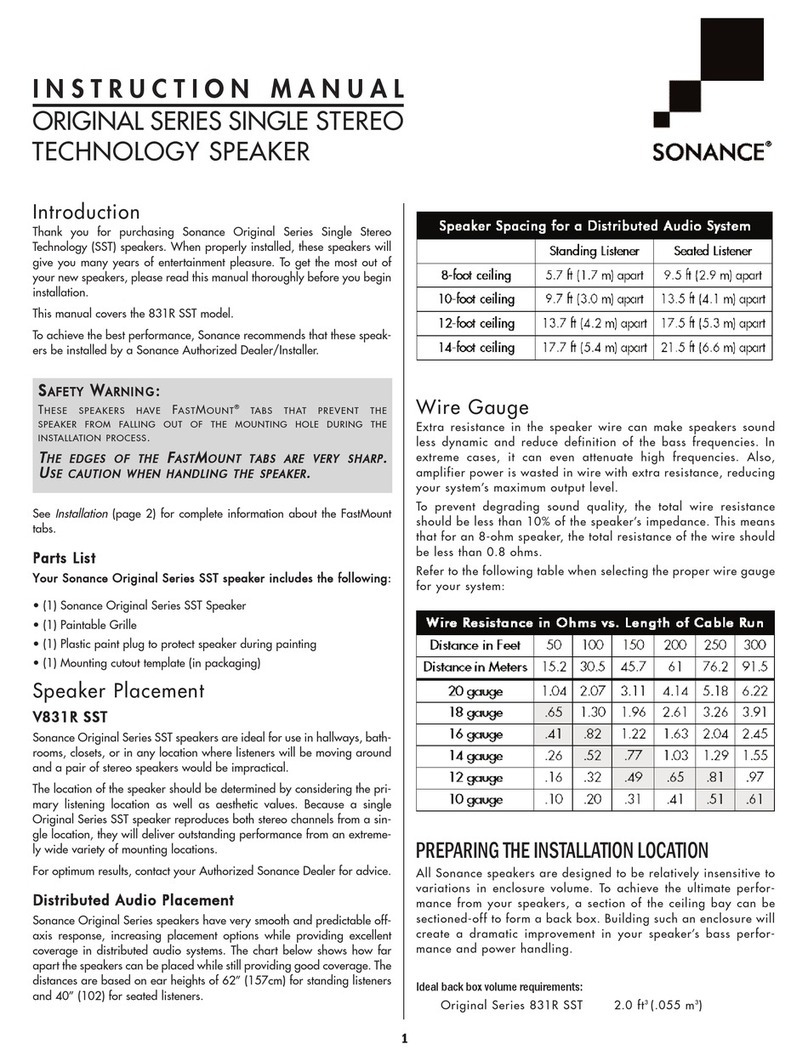
D. DAMPING
When the MMG C is placed close to a rear wall, the sound quality can
usually be improved with a dampin material, such as a wall han in ,
behind the speaker.
6. PROCESSOR SETTINGS
Set your receiver or processor on "small" speaker for the center channel, and "lar e" or
"full ran e" for the left/ri ht speakers. (This does not apply if the MC1 or MMG W are
used as front left/ri ht speakers.) Set the MMG C crossover point at 100Hz. Try hi her
crossover points to achieve natural reproduction of male voice. Dependin upon your
room conditions and the center channel placement, a different crossover point from
100Hz may be needed.
Even thou h you will probably be usin a subwoofer, set your receiver or processor for
"no subwoofer." This may seem stran e, but it is necessary for the proper inte ration
of the center channel bass. To drive your subwoofer, use a pre-amp output from the
front left/ri ht of the processor or receiver. (It may be necessary to use Y adapters.)
How (and why) this setup works-normally, when "small" center speaker is specified,
the center channel bass is routed to the subwoofer. In reality, this doesn't work very
well, especially for Ma neplanars. There is usually a frequency "hole" in the response
or the sonic inte ration is poor. When "no subwoofer" is specified, the processor
automatically routes the center channel bass to the front left/ri ht "full ran e"
Ma neplanars (because there is no alternative). The front left/ri ht Ma neplanars
provide the bass for the center channel speaker; and the inte ration is seamless,
havin the same characteristics as the MMG C.
Since the si nal from the front left/ri ht pre-amp outputs is "full ran e," the subwoofer
receives all the bass information. The .1 channel (effects) is not needed. Adjust the
subwoofer crossover point so it does not overlap with the "full ran e" front left/ri ht
Ma neplanars.
7. AMPLIFICATION
WARNING: The MMG C is a 5 ohm speaker. Be certain the amplifier or receiver you
are usin is capable of drivin a 5 ohm load. If you are uncertain, call the manufacturer
of the amplifier.
